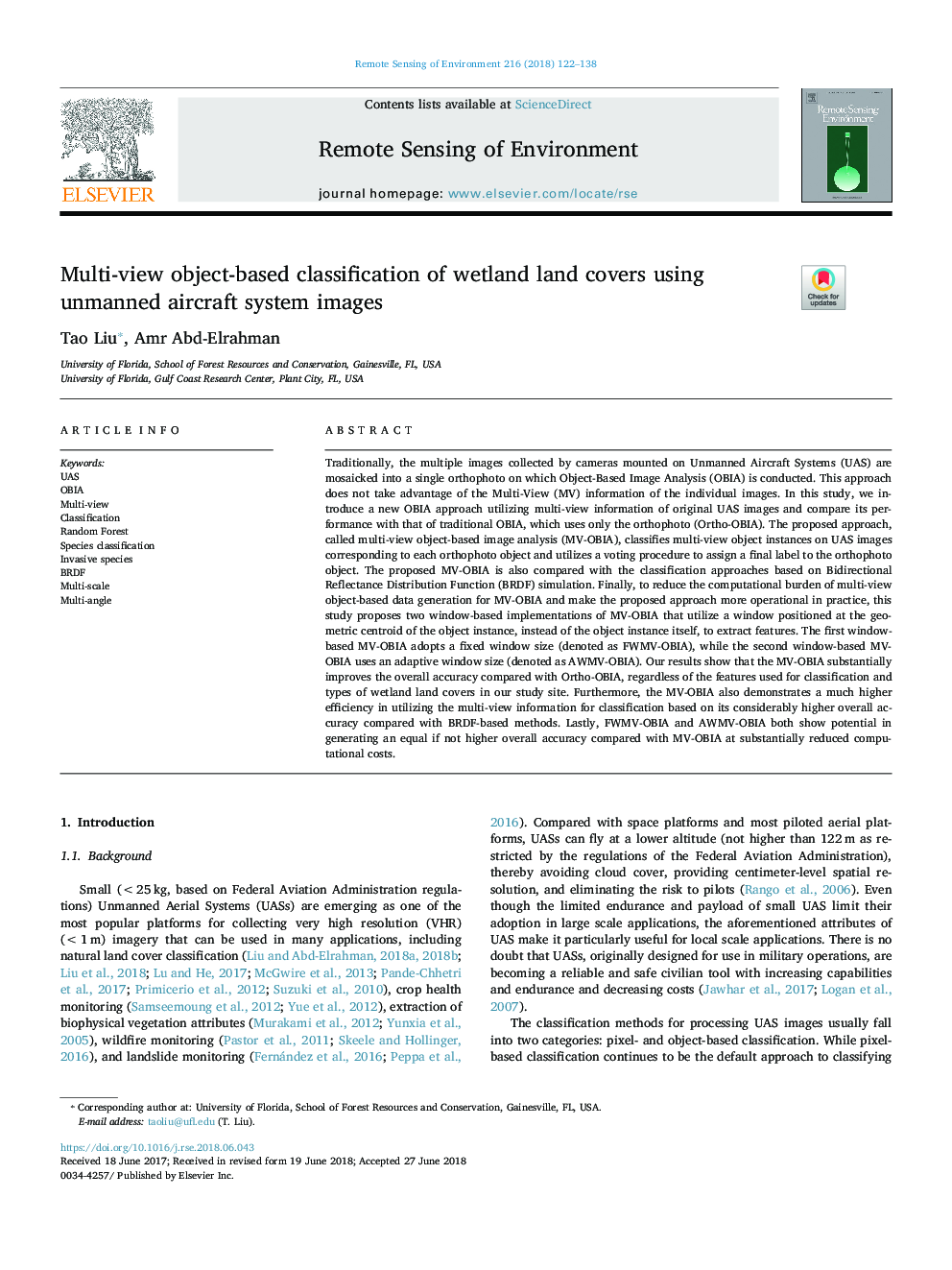| Article ID | Journal | Published Year | Pages | File Type |
|---|---|---|---|---|
| 8866406 | Remote Sensing of Environment | 2018 | 17 Pages |
Abstract
Traditionally, the multiple images collected by cameras mounted on Unmanned Aircraft Systems (UAS) are mosaicked into a single orthophoto on which Object-Based Image Analysis (OBIA) is conducted. This approach does not take advantage of the Multi-View (MV) information of the individual images. In this study, we introduce a new OBIA approach utilizing multi-view information of original UAS images and compare its performance with that of traditional OBIA, which uses only the orthophoto (Ortho-OBIA). The proposed approach, called multi-view object-based image analysis (MV-OBIA), classifies multi-view object instances on UAS images corresponding to each orthophoto object and utilizes a voting procedure to assign a final label to the orthophoto object. The proposed MV-OBIA is also compared with the classification approaches based on Bidirectional Reflectance Distribution Function (BRDF) simulation. Finally, to reduce the computational burden of multi-view object-based data generation for MV-OBIA and make the proposed approach more operational in practice, this study proposes two window-based implementations of MV-OBIA that utilize a window positioned at the geometric centroid of the object instance, instead of the object instance itself, to extract features. The first window-based MV-OBIA adopts a fixed window size (denoted as FWMV-OBIA), while the second window-based MV-OBIA uses an adaptive window size (denoted as AWMV-OBIA). Our results show that the MV-OBIA substantially improves the overall accuracy compared with Ortho-OBIA, regardless of the features used for classification and types of wetland land covers in our study site. Furthermore, the MV-OBIA also demonstrates a much higher efficiency in utilizing the multi-view information for classification based on its considerably higher overall accuracy compared with BRDF-based methods. Lastly, FWMV-OBIA and AWMV-OBIA both show potential in generating an equal if not higher overall accuracy compared with MV-OBIA at substantially reduced computational costs.
Keywords
Related Topics
Physical Sciences and Engineering
Earth and Planetary Sciences
Computers in Earth Sciences
Authors
Tao Liu, Amr Abd-Elrahman,
